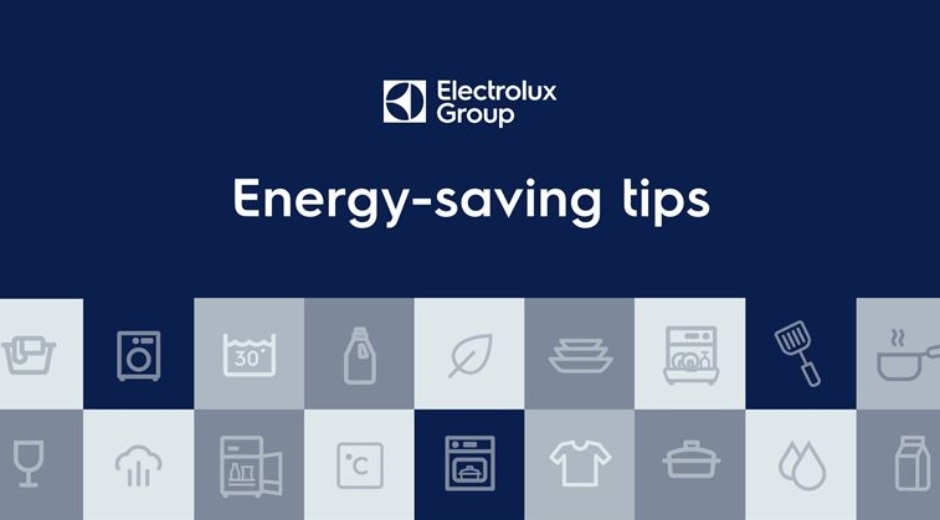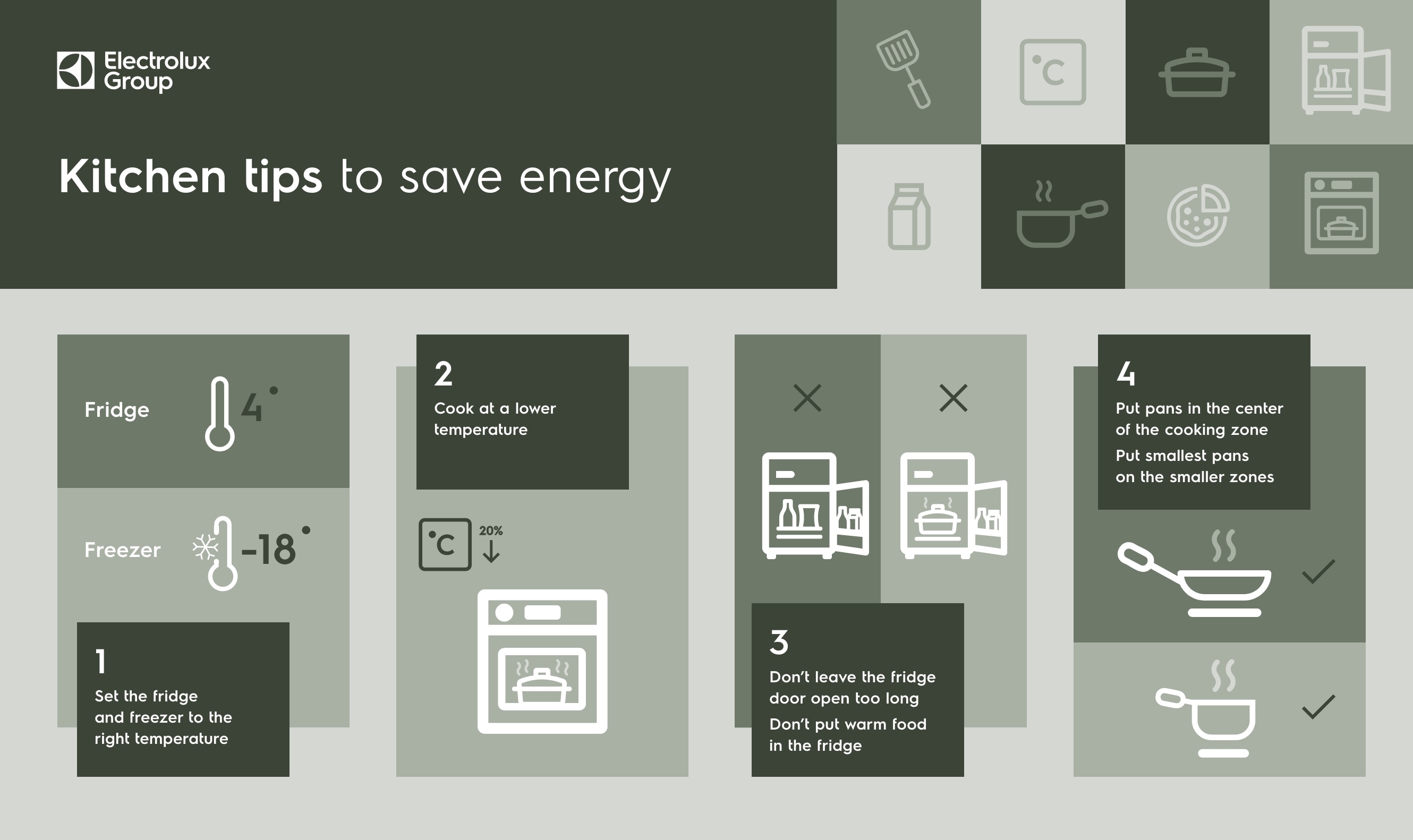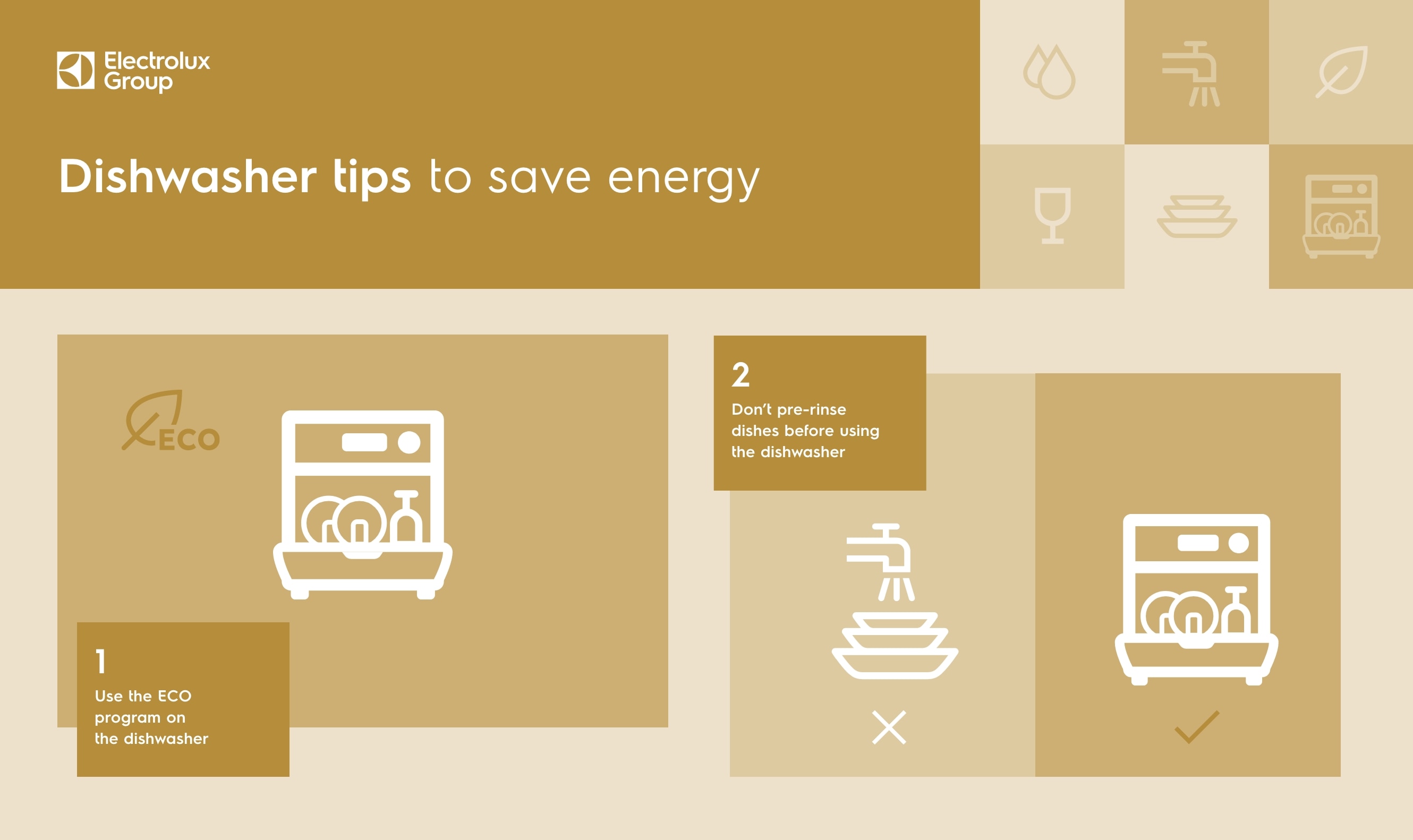With energy prices soaring, it’s never been a better time to rethink how you use the appliances in your home to save energy and money. And besides helping your household budget, it will also benefit the planet, reducing CO2 emissions. Here are some top tips on how to reduce energy when using your oven, hob, fridge and freezer, dishwasher, washing machine and tumble dryer.
Tips on how to reduce energy when using your oven and hob
- Don’t open the oven to check the cooking process. You will lose heat and humidity, and the food will take longer to cook, consuming more energy.
- Consider cooking at a lower temperature. It might take longer but has the potential to reduce energy consumption and give you better food taste and quality.
- Take unused accessories out of the oven when cooking — they just consume more energy.
- Put your saucepan in the center of the cooking zone before turning it on. Put the smallest cookware on the smaller zones, and use a lid when possible.
- When possible, finish cooking in the oven or on the hob with the residual heat.
Tips on how to reduce energy when using your fridge freezer
- Keep to the recommended temperatures: 4°C for the fridge and -18°C for the freezer. This secures an ideal balance between keeping food fresh and using the minimum amount of energy.
- Avoid putting warm food in the fridge. This makes the fridge work harder to cool down and uses more energy.
- Don’t keep the door open for too long when deciding what to eat. This allows for temperature increase.
- Remember to activate “vacation mode” or “rest mode” when leaving for vacation.
Tips on how to reduce energy when using your dishwasher
- Use the ECO program when dishwashing. It takes a bit longer time, but the dishwasher doesn’t have to work that hard which means it uses less energy. Compare it to if you run or walk . Running goes fast but you need to use a lot of energy. If you walk instead, it takes longer but you use much less energy. The same logic goes for the ECO program.
- Do not prerinse dishes by hand. Use the dishwasher instead as it will save both water and energy.
- And remember, if you have an hourly electricity rate, you can do the dishes when the price is at its lowest to reduce costs.
Tips on how to reduce energy when doing your laundry
- Wash at lower temperatures. It requires less energy to heat the water to 30°C instead of 40°C and above. With modern technology, it’s possible to wash at 30°C and deliver an efficient cleaning to an everyday load — if it’s not heavily stained or dirty — and this temperature is gentler on clothes.
- Set the maximum spin speed allowed on your washing machine program to minimize the energy needed for tumble drying.
- Use a steam function to refresh your clothes and smooth wrinkles, also reducing energy needed to iron. There can be a steam function on both washing machines and tumble dryers.
- Clean the lint filter on your tumble dryer regularly to keep the proper airflow to guarantee energy efficiency.
- Remember: In many houses, indoor hang drying increases humidity which could require more heating to keep the temperature in your home stable. Using a modern, heat-pump tumble dryer especially in wintertime makes sense.









